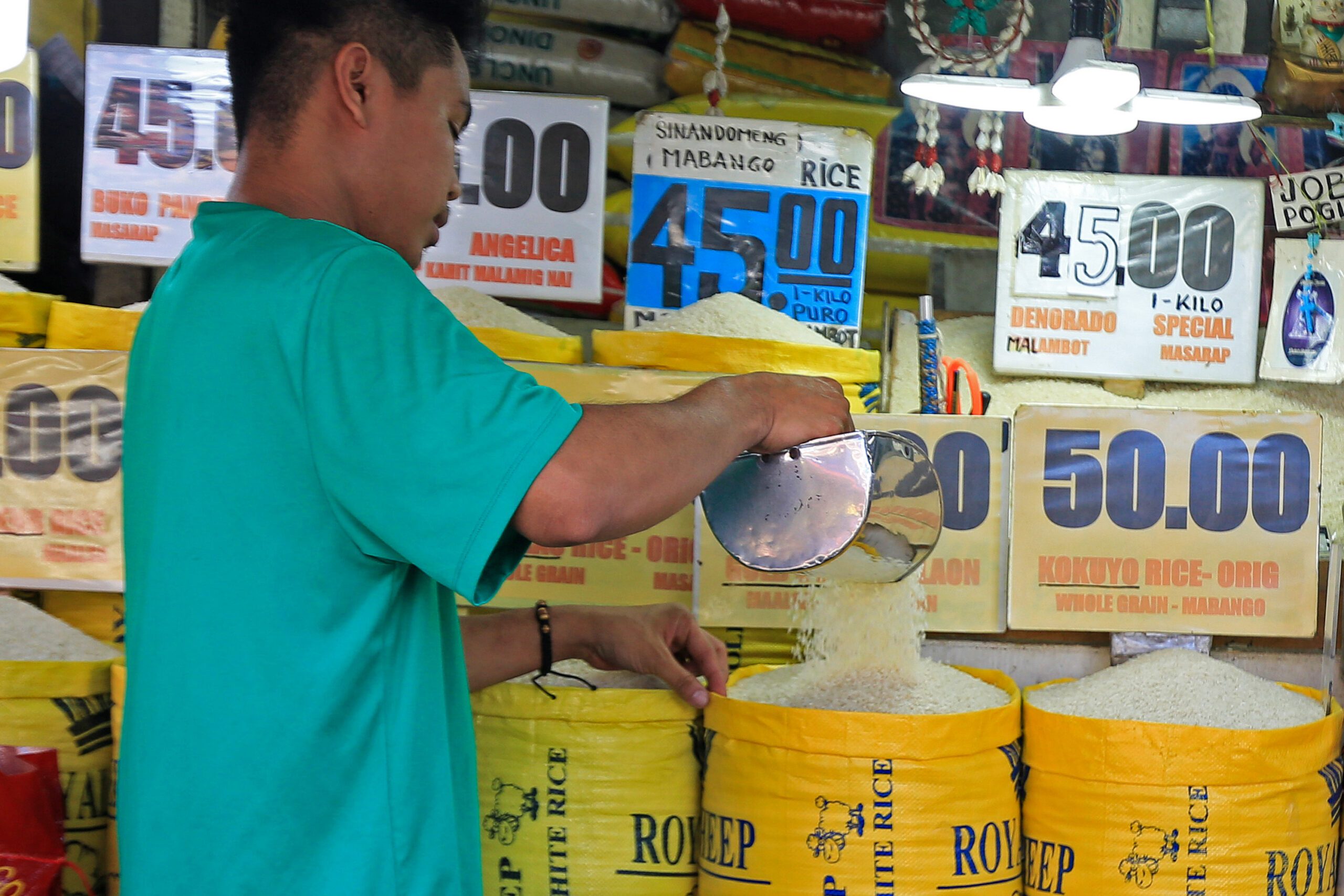SUMMARY
This is AI generated summarization, which may have errors. For context, always refer to the full article.

MANILA, Philippines – Prices of goods accelerated at a slower pace for the fourth straight month in January, as food prices continued to stabilize.
But in a rice-loving country like the Philippines, this downtrend is not easily felt as global prices of the staple coupled with weather concerns have pushed up domestic prices.
The Philippine Statistics Authority on Tuesday, February 6, reported that the inflation rate in January eased further to 2.8%, which is well within the government’s target range of 2% to 4%.
The latest figure is lower than the 3.9% posted in December 2023, and the 8.7% recorded in January 2023.
National Statistician Dennis Mapa said in a briefing on Tuesday that the slowdown was driven by food and non-alcoholic beverages (from 5.4% in December 2023 to 3.5% in January 2024); housing, water, electricity, gas, and other fuels (from 1.5% to 0.7%); and transport (from 0.4% to -0.3%).
While the overall trend shows inflation is tapering off, it’s a different story for rice.
Rice inflation surged to 22.6% in January 2024 from 19.6% in December 2023. This is a 14-year high since the 22.9% recorded in March 2009.
Mapa explained that global rice prices were significantly high in January, compared to the first two quarters of 2023.
Regular milled rice, which is supposed to be the cheapest variety, averaged at P49.65 per kilo, a 25.4% increase from the P39.60 last year.
The average price of well-milled rice saw a 25% jump to P54.91 per kilo from last year’s P43.92.
Meanwhile, the average price of special rice went up by 18.9% to P63.90 per kilo from P53.76.
National Economic and Development Authority Secretary Arsenio Balisacan said the government is closely monitoring rice prices and will provide appropriate policy recommendations to President Ferdinand Marcos Jr. to ensure stable and affordable prices of commodities.
Balisacan added that they are addressing the impact of El Niño by allowing imports of certain commodities to stabilize supply.
The Bangko Sentral ng Pilipinas earlier projected that lower prices of vegetables and sugar would contribute to downward price pressures. But it had said that higher prices of rice, meat, fruits, and fish, along with increased petroleum prices as well as electricity and water rates, could drive up inflation.
On Tuesday, gasoline and diesel prices went up for the fifth straight week. Gasoline increased by P0.75 per liter and diesel by P1.50 per liter. – Rappler.com
Add a comment
How does this make you feel?
![[EDITORIAL] Apat na taon na lang Ginoong Marcos, ‘di na puwede ang papetiks-petiks](https://www.rappler.com/tachyon/2024/07/animated-bongbong-marcos-2024-sona-day-carousel.jpg?resize=257%2C257&crop=280px%2C0px%2C720px%2C720px)
![[In This Economy] Delulunomics: Kailan magiging upper-middle income country ang Pilipinas?](https://www.rappler.com/tachyon/2024/07/in-this-economy-upper-middle-income-country.jpg?resize=257%2C257&crop=421px%2C0px%2C1080px%2C1080px)

![[EDITORIAL] Marcos Year 2: Hilong-talilong](https://www.rappler.com/tachyon/2024/07/animated-bongbong-marcos-2nd-sona-carousel.jpg?resize=257%2C257&crop=136px%2C0px%2C720px%2C720px)
![[Newspoint] A fighting presence](https://www.rappler.com/tachyon/2024/07/thought-leaders-a-fighting-presence.jpg?resize=257%2C257&crop=441px%2C0px%2C1080px%2C1080px)
There are no comments yet. Add your comment to start the conversation.